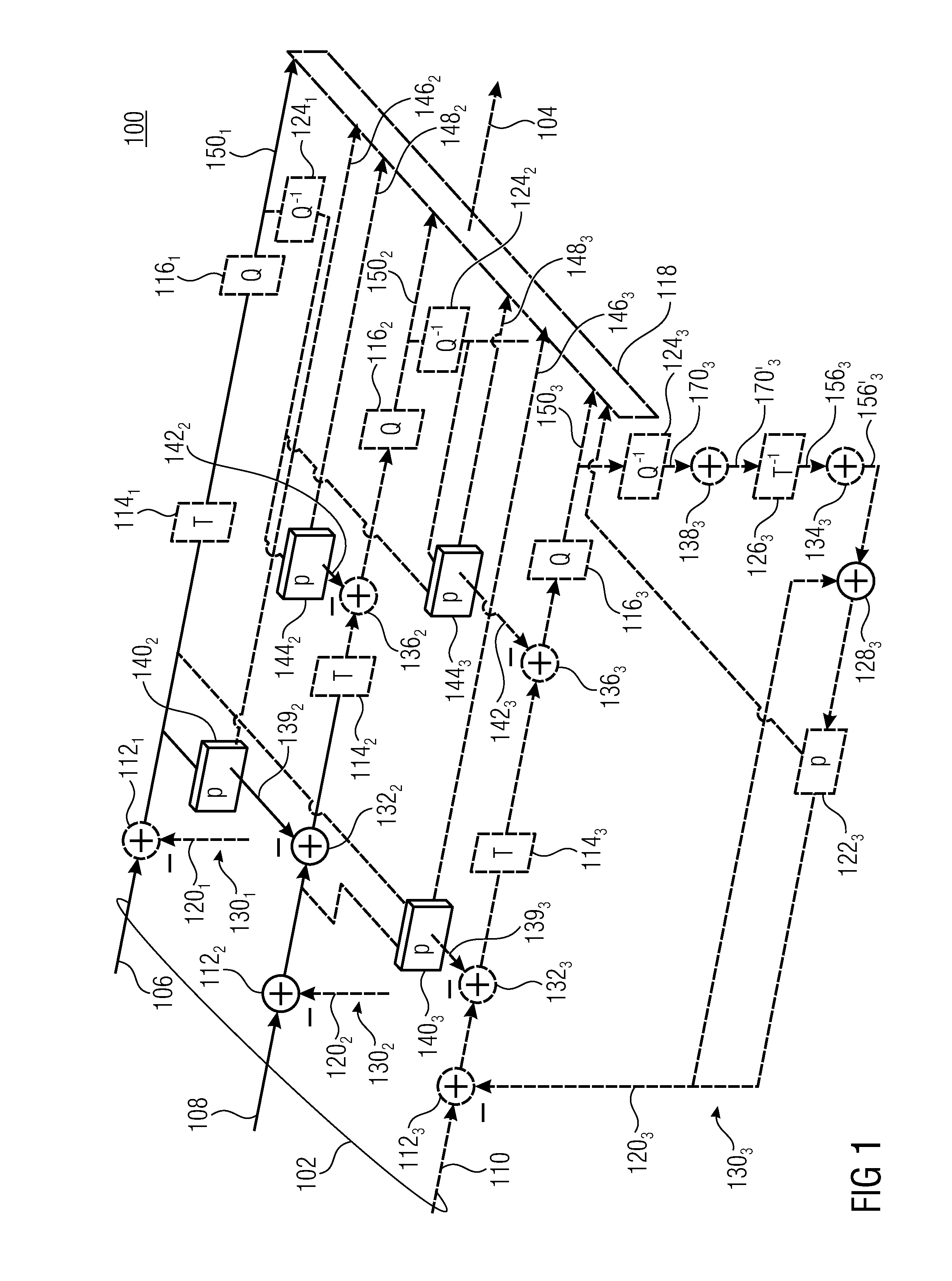Inter-component prediction
a prediction and component technology, applied in the field of intercomponent prediction, can solve the problems of information loss, i.e., the sample value available in the original color space might be lost after such a color transformation, and it is difficult to achieve the optimal result for the original input signal, so as to increase the coding efficiency, reduce the overhead of signalling the syntax element, and improve the effect of coding efficiency
- Summary
- Abstract
- Description
- Claims
- Application Information
AI Technical Summary
Benefits of technology
Problems solved by technology
Method used
Image
Examples
first embodiment
[0227] a decoder is configured to decode a multi-component picture 202 spatially sampling a scene with respect to different components 206, 208, 210, by reconstructing a first component signal 2561; 2701 relating to a first component 206 of the multi-component picture 202 from a data stream 104; reconstructing 400 a portion 440 of a second component signal 256′2; 270′2 relating to a second component 208 of the multi-component picture 202 from a spatially corresponding portion of the reconstructed first component signal 2561; 2701 and a correction signal 2562; 2702 derived from the data stream.
[0228]According to a second embodiment, the decoder according to the first embodiment is configured as a block-based hybrid video decoder configured to sub-divide the multi-component picture 202 regularly into tree blocks 302, subdivide the tree blocks using recursive multi-tree subdivisioning into code blocks 304 individually and subdivide each code block using recursive multi-tree subdivision...
second embodiment
[0248]According to a twenty-second embodiment, the decoder according to the twentieth embodiment is configured to set the weights in a backward-driven manner based on attributes of an already decoded portion of the multi-component picture.
third embodiment
[0249]According to a twenty-third embodiment, the decoder according to the eighteenth embodiment is configured to set the weights, in a combined backward and forward adaptive manner, or a forward-adaptive manner, a backward-adaptive manner, to default values, at a first spatial granularity, and refine the weights in a backward-driven manner based on a local neighbourhood at a second spatial granularity being finer than the first spatial granularity.
PUM
 Login to View More
Login to View More Abstract
Description
Claims
Application Information
 Login to View More
Login to View More - R&D
- Intellectual Property
- Life Sciences
- Materials
- Tech Scout
- Unparalleled Data Quality
- Higher Quality Content
- 60% Fewer Hallucinations
Browse by: Latest US Patents, China's latest patents, Technical Efficacy Thesaurus, Application Domain, Technology Topic, Popular Technical Reports.
© 2025 PatSnap. All rights reserved.Legal|Privacy policy|Modern Slavery Act Transparency Statement|Sitemap|About US| Contact US: help@patsnap.com



